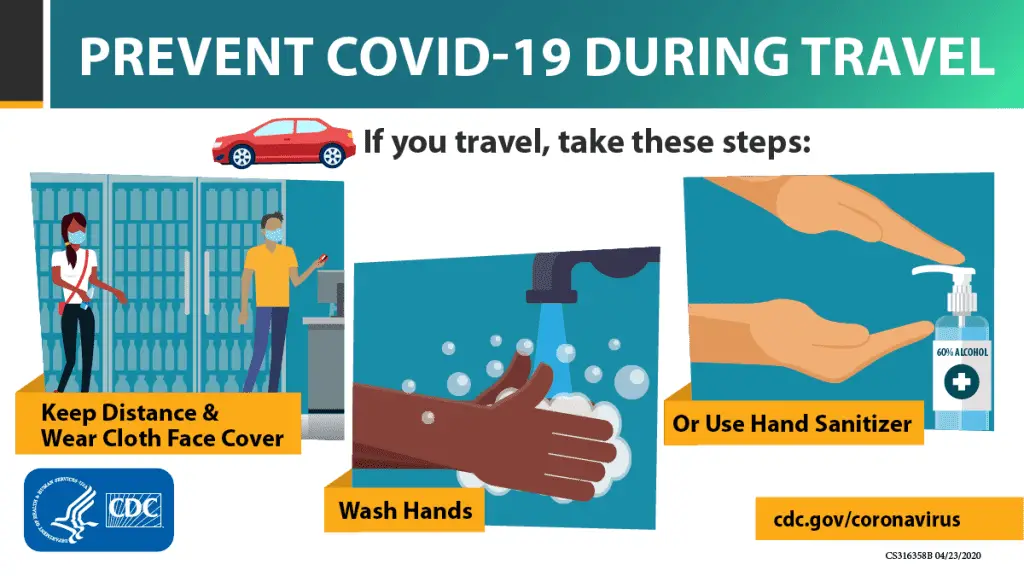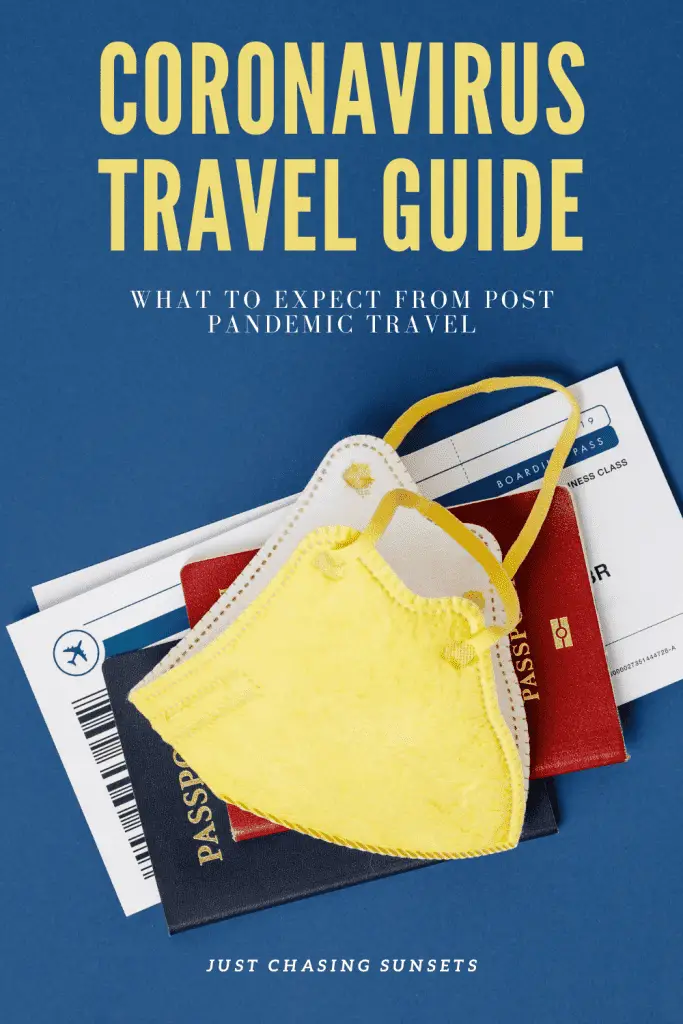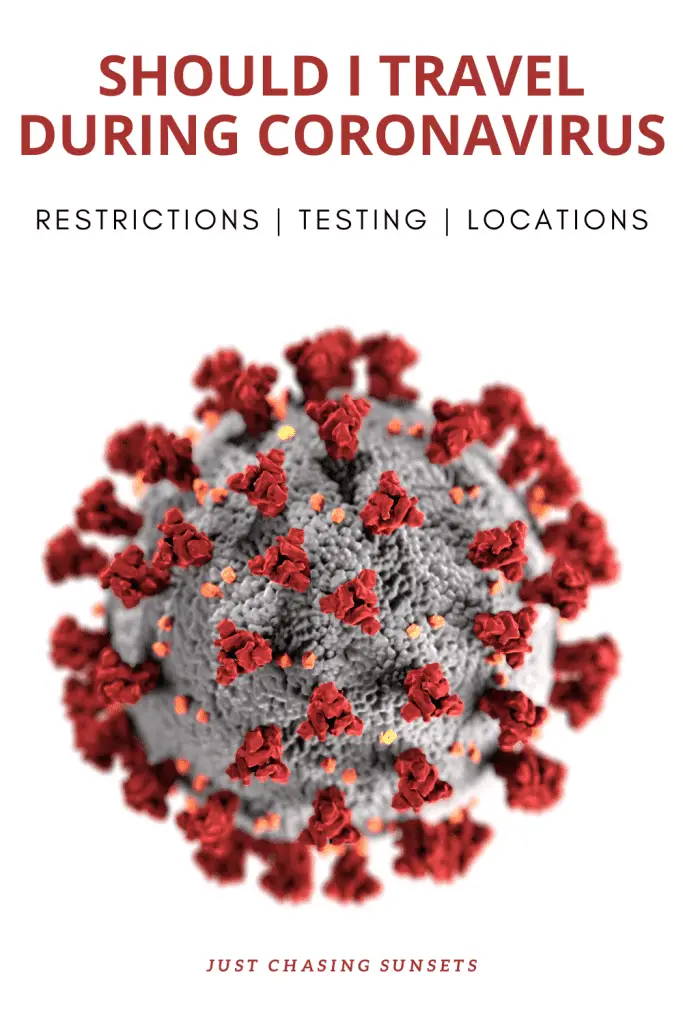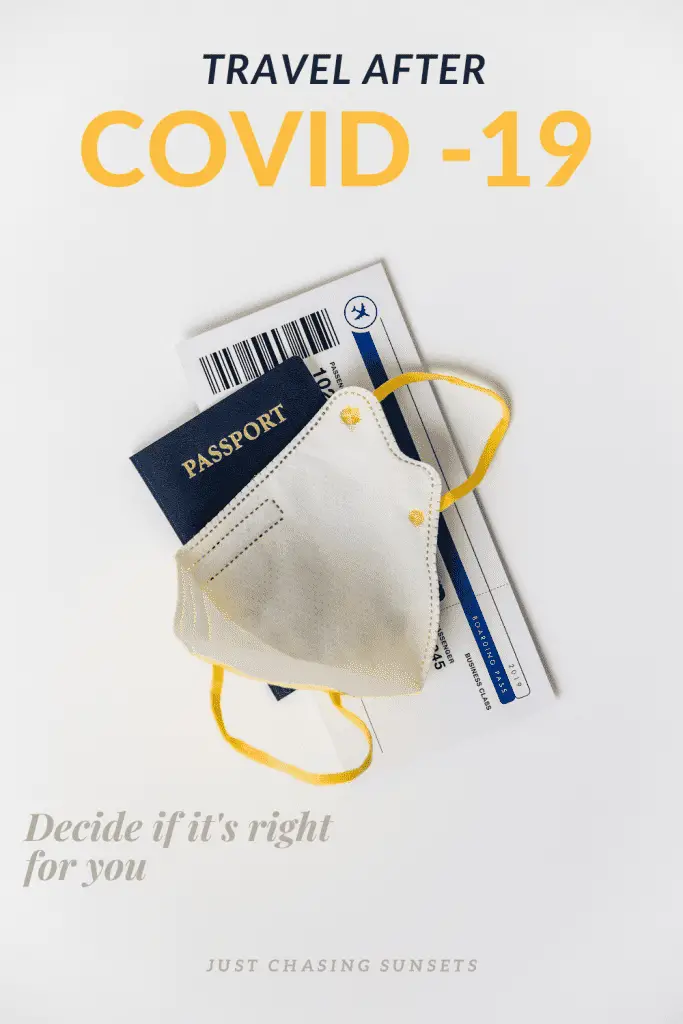Blog, Health, Solo Female Travel
Should You or Shouldn’t You? Traveling During the Coronavirus Pandemic
I never thought I’d be writing about traveling during a pandemic on my blog, but here we are. I am writing this on May 31, 2020 and feel the urge to tell you the specific date because what I write today may not be true tomorrow or even within six hours. I will be updating this as much as possible, but the power of this post is in the resources and worksheets which you can download by signing up here or wherever you see an email sign up on this post.
I spent hours combing through websites to find the most user-friendly and well-rounded information on Coronavirus and travel that are updated as soon as policies change. You’ll also have a list of important questions to ask of yourself and of your destination/hotel/airline that will help you make educated decisions about whether or not it is appropriate for your situation to travel.
However, before I get to those, I want to touch on a few things I’ve noticed about how information is getting shared about Coronavirus and travel.
Don’t Just Read Headlines
The headlines of many articles are seriously misleading and a form of clickbait. They are written to stir up travel excitement about the fact that you can travel somewhere, but then you click into the article to discover that is not actually the case.
For instance, one article came into my inbox that said “Europe is opening for tourists this summer”. As a US citizen, I got super excited reading that headline and immediately started dreaming of going back to Ireland or finally going to the Azores. Then I actually read the article. While the headline isn’t lying; some European countries are opening their borders to tourists, it’s only for European Union citizens. Then I feel like an egocentric ass for not realizing that of course, Europeans traveling to another European country are still tourists.
At this time, the reality is that some European countries are opening their internal borders for summer travel, but non-EU citizens that would have to cross oceans or leave their continent are still likely going to be subject to quarantines or additional contingencies upon arrival.
And I don’t know about you, but I definitely don’t want to be spending my hard-earned vacation days in an Italian hotel room.
So please, read the entire article that happens to land in your inbox or scroll past you on social media before getting too excited.
The Travel Landscape is Changing
Since the ability to travel internationally is still a bit unknown at this point, the travel landscape is changing in favor of local travel. Instead of dealing with the hassle of potential quarantines abroad, travelers are more inclined to spend their time, energy, and resources planning a trip that will support local communities and help local businesses get back on their feet.
Personally, I think this is a great opportunity to explore the beauty in your own backyard.

Considerations When Planning Your Trip Amidst Coronavirus
As we head into summer travel and destinations begin their reopening process, I believe there will be more road trips and escapes into nature than weekends spent in cities or far-flung destinations. I also think that the days of hopping in the car with a loose destination in mind and figuring out your itinerary on the way are gone, for now.
More planning will be required to make sure you don’t waste your time and money or go to a destination that isn’t open at all.
So let’s discuss what you’ll need to consider when planning your trip post Coronavirus.
Questions to Ask Yourself Throughout the Planning Process
- Is Coronavirus spreading where I’m going?
- Is Coronavirus spreading where I live?
- Am I traveling with an at-risk person?
- Do I regularly interact or live with an at-risk person?
- Will I have to quarantine in my destination or upon my return home
- What are the local restrictions?
Research Your Destination
First and foremost, you have to do research on your destination’s approach to tourism.
Are they open to tourists? If so, are any quarantines in place for tourists?
For instance, San Francisco just extended its shelter in place order indefinitely, so you may not want to travel to the city by the bay this summer. Hawaii, Alaska, Florida, and Maine currently have a 14-day quarantine for tourists. International travel is even more of a question mark.
Take some time to do your research (using the resources in the guide I can email you) to understand what your destination’s response to Coronavirus is, what phase they’re on in reopening, and of course any restrictions.
Something else you may want to consider is the number of Coronavirus cases that are reported in your destination. Knowing if there are a large or small number of cases can help inform your decision. The CDC does not recommend traveling unless it’s essential, and it certainly does not recommend traveling to areas where COVID cases are high as you have an increased risk of contracting the virus and bringing it home with you.
On the flip side, you could bring the virus with you. If you live in an area with high numbers of Coronavirus infections, you could be asymptomatic and spread the virus.
- This makes it important to consider the actual location of your destination.
- How remote is it?
- Is the local medical system already stretched thin or limited, even in pre-Coronavirus days?
I know we feel this urge to get out and explore, but if where you want to go already has limited access to medical services, go somewhere else.
I highly recommend following Katie Boue on Instagram. She is an outdoor advocate and provides a wealth of information on how to recreate responsibly outdoors this summer.
Decide on Appropriate Transportation
Now that you know your destination guidelines and have considered the CDC recommendations, you’ll have to decide how to get there.
If it’s within a few hours, could you drive and make a road trip out of it? Or will you need to get on a plane? If you do have to take a flight to get there, how long is the flight?
While I truly believe that airplanes have never been cleaner, seeing first hand how air carriers have stepped up their cleaning procedures, I also think if you have to get on a plane to get to your destination, you might want to rethink it.
Staying close to home is still the best decision, so do your best to pick a destination that you could easily drive to and from on one tank of gas to minimize refueling stops.
Decide Where You’ll Stay
If you’re planning a multi-night trip, you’ll have to consider where you’ll stay and what accommodation options are available to you in your destination. Because different countries, states, and counties have different Coronavirus restrictions in place, your home may have hotels open, when your destination does not.
Also, please be aware that many hotels are open, but for essential workers. Airbnbs may also have a 30 day stay requirement depending on your destination. This may be the time to consider alternative options to hotels and Airbnbs.
Camping anyone?
I’ve camped one night in my life, and it did not go well, however, I am still planning on camping this summer. I’m looking at it as a new challenge and a new adventure.
I’m also looking into renting a car that would have enough space for me to sleep in. Even though renting a car has its own issues during this pandemic.
If you’re considering camping, make sure to research your campsite to know what facilities are available at the campsite, any reservations that are required, and of course local ordinances.
As always, bring everything out with you that you brought in!
Food
Restaurant availability is definitely varied in terms of being able to actually eat at a restaurant. However, many offer curbside pick up and are available on delivery apps such as GrubHub, Doordash, and Uber Eats.
That being said, you may want to bring your own food, especially if you are doing a road trip and are staying somewhere that you can cook. Having food with you for the road trip itself will limit the amount of contact made with small communities you pass through.
Protecting Yourself & Others
If you make the decision to travel, please protect yourself and others by following the current CDC guidelines of wearing a mask in public spaces, maintaining 6 feet of social distance, and generally limiting your contact with others.
Definitely carry hand sanitizer with you at all times and wash your hands as much as possible. You may also want to carry clorox wipes to clean any hard surfaces.
Ensure that you travel with more than enough supplies, including medications, whether you’re camping or staying in a hotel.
As stated above, this was written on May 30, 2020.
I will do my best to continuously update it as we continue to move through the progression of Coronavirus and its impact on travel.
But please, use the resources in the PDF that you signed up for, n for the most up to date information in between updates of this post. Additionally, use the worksheets to help you determine if traveling at this time is right for you, your family, and your community.
Stay safe out there travel friends!




